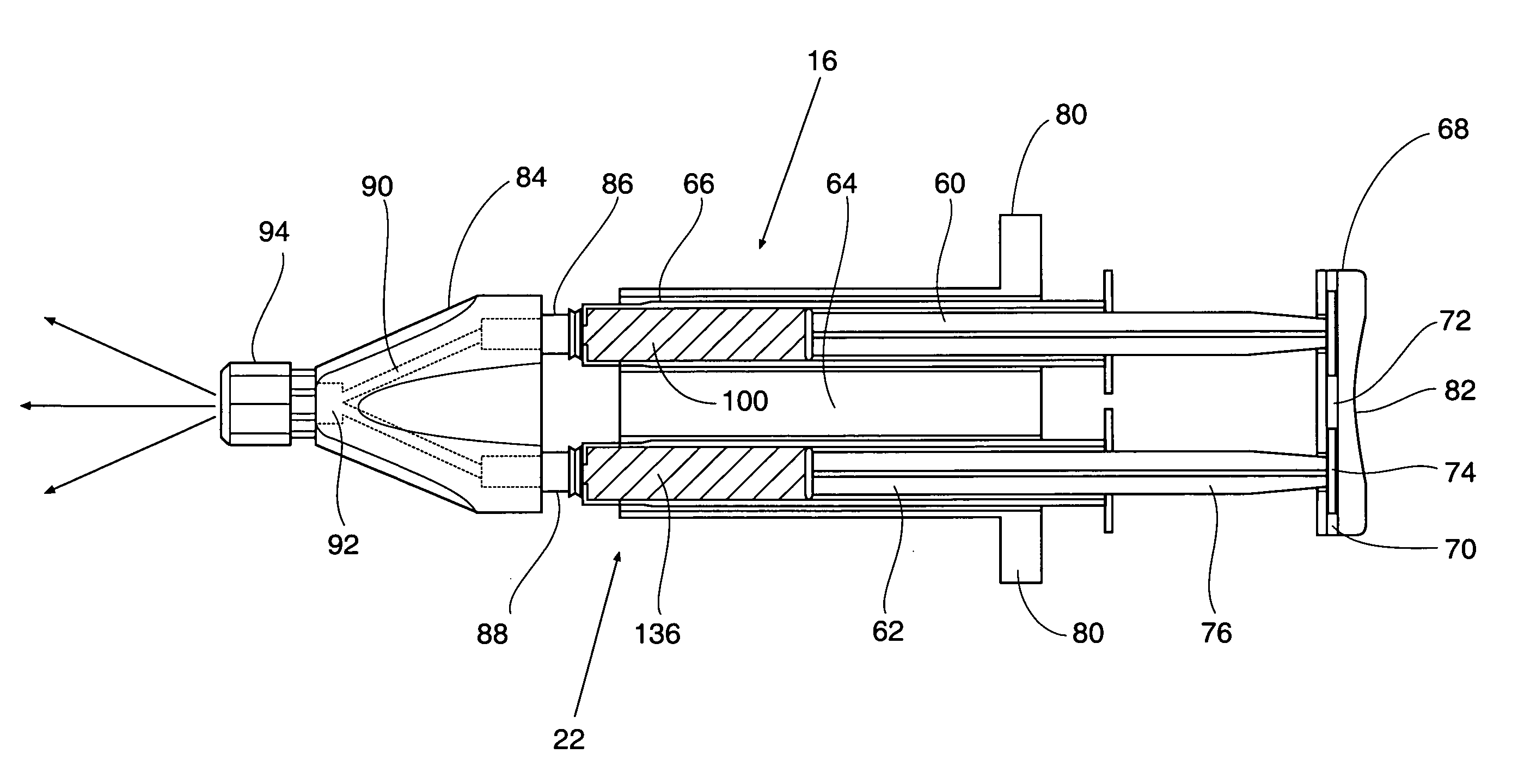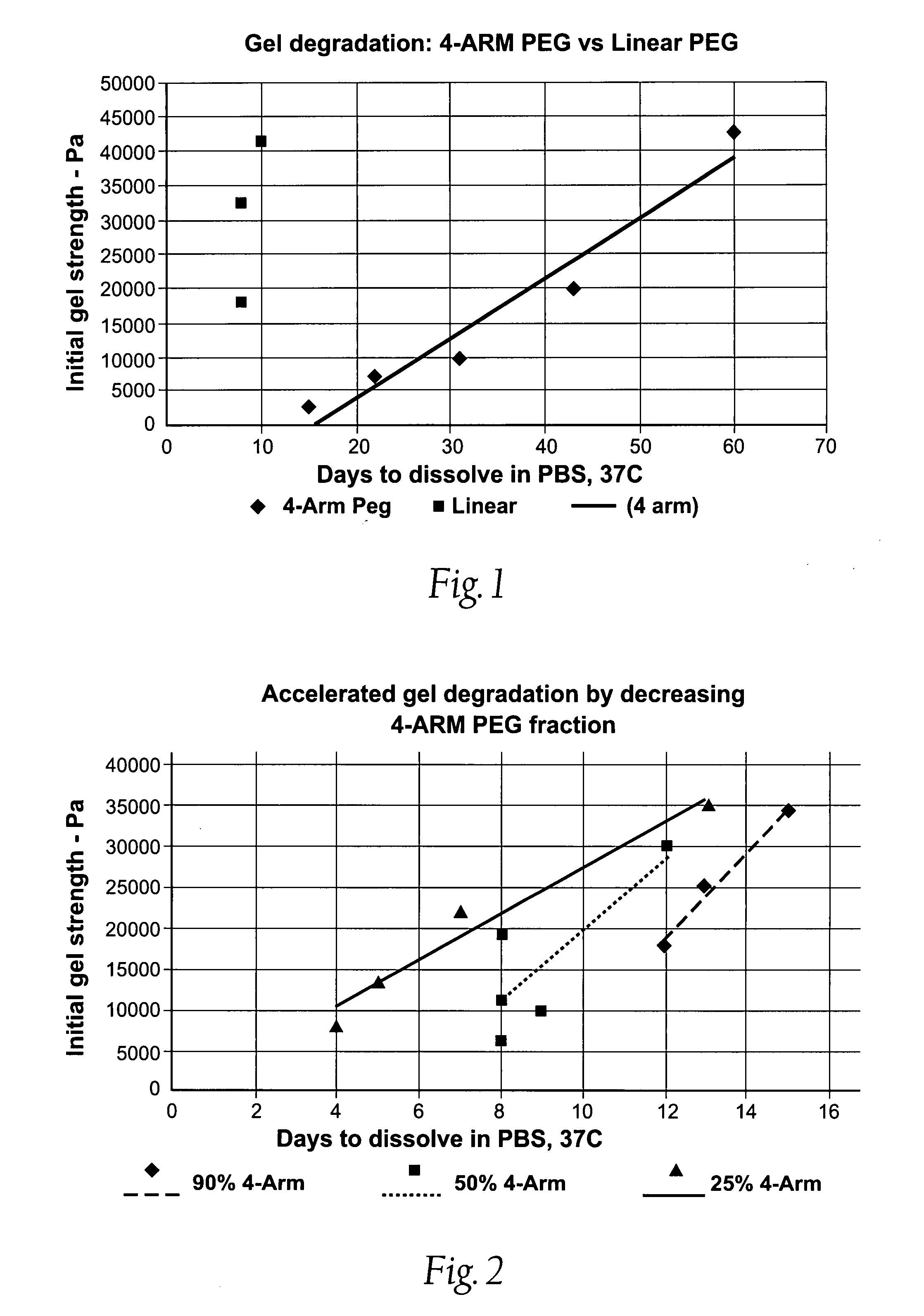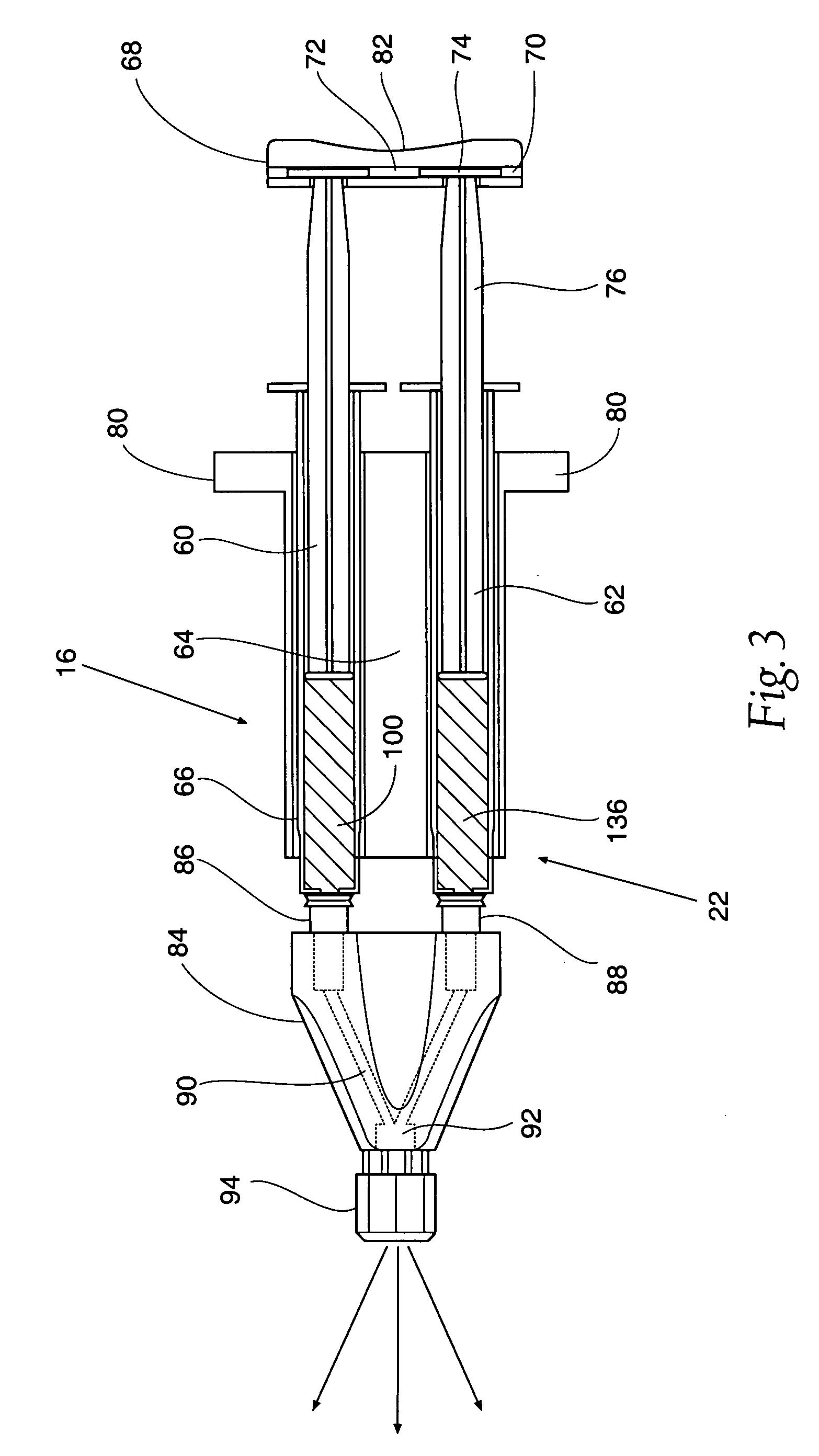Systems, methods, and compositions for prevention of tissue adhesion
a tissue adhesion and composition technology, applied in the field of systems, methods and compositions for preventing tissue adhesion, can solve the problems of reducing or hindering the normal movement of the repair area, reducing sensory or motor function, and causing the formation of adhesion after surgery or trauma
- Summary
- Abstract
- Description
- Claims
- Application Information
AI Technical Summary
Benefits of technology
Problems solved by technology
Method used
Image
Examples
example
[0063] The above description is only one possible combination and blend of materials. Table 1 shows results of in vitro and in vivo tests, comparing different degradation rates of various multi-functional PEG sample materials (Materials 1 to 5), linear PEG materials (Materials 6 to 8), and blended or hybrid PEG materials (Materials 9 to 20).
TABLE 1PEG Degradation ComparisonsAlbu-PEG / InitialDaysInitialPEGminAlbuminGelUntilConditionsfunctionalityin %RatioStrengthDissolvedMaterial 1100%4-Arm255.34317060Material 2100%4-Arm12.55.31997043Material 3100%4-Arm9.45.3693122Material 4100%4-Arm9.43.5276815Material 5100%4-Arm9.47987031Material 6100%Linear405.6323888Material 7100%Linear255.3180708Material 8100%Linear2510.54137010Material 990%4-Arm107.51772012Material 1090%4-Arm17.55.53444015Material 1190%4-Arm203.52510013Material 1250%4-Arm107.5111008Material 1350%4-Arm17.55.52972012Material 1450%4-Arm105.560608Material 1550%4-Arm203.5191008Material 1650%4-Arm153.5100009Material 1725%4_arm17.57....
PUM
| Property | Measurement | Unit |
|---|---|---|
| Fraction | aaaaa | aaaaa |
| Fraction | aaaaa | aaaaa |
| Fraction | aaaaa | aaaaa |
Abstract
Description
Claims
Application Information
 Login to View More
Login to View More - R&D
- Intellectual Property
- Life Sciences
- Materials
- Tech Scout
- Unparalleled Data Quality
- Higher Quality Content
- 60% Fewer Hallucinations
Browse by: Latest US Patents, China's latest patents, Technical Efficacy Thesaurus, Application Domain, Technology Topic, Popular Technical Reports.
© 2025 PatSnap. All rights reserved.Legal|Privacy policy|Modern Slavery Act Transparency Statement|Sitemap|About US| Contact US: help@patsnap.com



